 August 24, 2017 John E. Ross, KD8IDJ, Editor
| |||||||
Solar Eclipse QSO Party a Hit, Science Conclusions Await Additional Analysis The 2017 Solar Eclipse QSO Party (SEQP) is history, and, while logs are still coming in, the preliminary participation numbers look good, according to Nathaniel Frissell, W2NAF, of HamSCI.
"Although the final numbers are not yet in, preliminary reports show that over 670,000 spots were detected by the Reverse Beacon Network (RBN), and over 542,000 spots were reported to PSKReporter [PSK Automatic Propagation Reporter] during the SEQP," Frissell told ARRL on August 22. "These numbers will increase as data is processed." Frissell said overall, the event went well, and he heard a lot of on-the-air activity during the 8 hours the SEQP was running. "It will take some time to get a more scientific analysis of this, but we should have some results by the middle of this semester," said Frissell, who is an associate research professor at the New Jersey Institute of Technology. Frissell and others are investigating whether the sudden absence of sunlight during the eclipse -- and especially of solar ultra-violet and x-rays -- would briefly change the properties of the upper atmosphere.
Despite more than 60 years of research, "open questions remain regarding eclipse-induced ionospheric impacts," Frissell explained in a paper, "HamSCI and the 2017 Total Solar Eclipse," that he'll deliver this year at the ARRL-TAPR Digital Communications Conference (DCC). He is encouraging anyone who took part in the SEQP to submit a log by September 30. Once their logs are submitted, SEQP participants will get a PDF Certificate of Participation. Frissell, who was in Gilbertsville, Kentucky, to observe the eclipse, said, "Totality was beautiful." At Maxim Memorial Station W1AW, the focus was more on keeping on top of any emergency situations that could arise from the thousands of visitors converging along the narrow strip of totality. ARRL Emergency Preparedness Manager Mike Corey, KI1U, and his assistant Ken Bailey, K1FUG, checked into and monitored the SATERN Net on 20 meters. They also monitored the interoperability channel 1 on 60 meters for coordination with federal partners. W1AW Station Manager Joe Carcia, NJ1Q, checked into WL2K nodes on 40 meters for any possible traffic. "Also, during this time, we went outside to look at the eclipse!" Carcia added.
Many Amateur Radio special event stations were also on the air along the path of totality on August 21. Veteran Broadcast Listener (BCL) Bill Feidt, NG3K, in Maryland, conducted an informal propagation experiment on the AM broadcast band, listening on 1,070 kHz, which, he reported, "came alive with many signals" at about 1830 UTC. "It was pretty much a jumble," he told ARRL. "But just before 1900 UTC, I was able to identify WNCT in Greenville, North Carolina, which became quite strong and dominant for a few minutes." WNCT's 50 kW daytime signal is aimed away from Maryland. Elsewhere, using the S-meter on his Panasonic RF-4900 receiver, 88-year-old John S. Erickson of Schenectady, New York, the father of ionospheric researcher Phil Erickson, W1PJE, recorded the signal strength of WWV time signals on 10 and 15 MHz every 10 minutes. His results show that nighttime conditions, where WWV got stronger on 10 MHz and weaker at 15 MHz, occurred before local eclipse passage on long paths. His data is being passed on to HamSCI for analysis. "RF Seismograph" Sees Little Effect Elsewhere, an initial analysis of solar eclipse RF Seismograph measurements by Alex Schwarz, VE7DXW, and his Modulation-Demodulation Software Radio (MDSR) group has suggested that the effect of the brief interruption in solar radiation within an approximately 70-mile-wide strip had minimal overall effect on radio propagation. The Scanning RF Seismograph is a real-time HF propagation monitoring tool.
"The Solar Eclipse RF Seismograph exclusively showed that propagation changes, but not to the extent that folktales report," Schwarz and the MDSR team said in a news release. "During the eclipse, we measured in three locations, and two did not show any changes in the way propagation behaves. On the third station, at an elevation of 900 meters, the 40-meter band came up, but that is not any different from regular 40-meter behavior." The team believes that increased absorption on the low bands from high solar activity may have been a factor in the measurement's not yielding expected results. "The small band of darkness could not compensate for the thicker D Layer," the MDSR news release said. Frissell told Schwarz that he'd be "very hesitant to make these conclusions so quickly and based on observations from a single point of reference." "We know from past experiments that there are significant ionospheric changes resulting from the eclipse. Even from a citizen-science standpoint, many of these changes have been documented. We are hoping to see these effects on a larger scale." Read more. Harvey Gains Hurricane Strength, Hurricane Watch and VoIP Hurricane Nets Activate Tropical Depression Harvey regained strength in the Gulf of Mexico on August 24 and was upgraded to a Category 1 hurricane. The Hurricane Watch Net (HWN) activated at 1500 UTC on 14.325 MHz, and planned remain there until 0100 UTC. The HWN will activate on its nighttime frequency of 7.268 MHz at 0000 UTC. "This will allow us a 1-hour overlap between bands," said HWN Net Manager Bobby Graves, KB5HAV. "Should propagation dictate, we will operate on both frequencies simultaneously. Once activated, we will remain active until further notice."
On that forecast track (see NOAA graphic below), Harvey was predicted to approach the middle-Texas coast on August 25, making landfall that night or early on August 26 and stalling near the middle-Texas coast through the weekend. ARRL South Texas Section ARES posted communication plans for ARES volunteers. ARRL South Texas Section Emergency Coordinator Jeff Walter, KE5FGA, said the section was preparing for the storm's arrival along the South Texas coast. "Monitor the frequencies in the ICS-205 document, when able," he advised volunteers. Harvey would be the first hurricane to make landfall in Texas in 9 years. In addition to high winds along the Texas coast and further inland, the main concern with this storm is heavy rain and flooding.
NHC also warned that a combination of a dangerous storm surge and tides "will cause normally dry areas near the coast to be flooded by rising waters moving inland from the shoreline." The VoIP Hurricane Net announced activation plans, starting Friday afternoon and continuing through early Saturday afternoon. "Any Amateur Radio operators in the affected area of Harvey or with relays into the affected area of Harvey are asked to provide surface and damage reports into the VoIP Hurricane Net," said the net's Director of Operations Rob Macedo, KD1CY. "Any SKYWARN Nets active in the local area that can pass reports to the VoIP Hurricane Net for relay into WX4NHC at the National Hurricane Center are welcome to send a net liaison or connect directly at their discretion." Visit the ARRL or HWN websites for further updates. The Doctor Will See You Now! "S-Units" is the topic of the current (August 17) episode of the "ARRL The Doctor is In" podcast. Listen...and learn!
Every 2 weeks, your host, QST Editor-in-Chief Steve Ford, WB8IMY, and the Doctor himself, Joel Hallas, W1ZR, will discuss a broad range of technical topics. You can also e-mail your questions to doctor@arrl.org, and the Doctor may answer them in a future podcast. Enjoy "ARRL The Doctor is In" on Apple iTunes, or by using your iPhone or iPad podcast app (just search for "ARRL The Doctor is In"). You can also listen online at Blubrry, or at Stitcher (free registration required, or browse the site as a guest) and through the free Stitcher app for iOS, Kindle, or Android devices. If you've never listened to a podcast before, download our beginner's guide. Just ahead: "Antenna Analyzers." Revised NCVEC Form 605 Must Now Be Used at Exam Sessions With a revised FCC Form 605 -- Quick-Form Application for Authorization in the Ship, Aircraft, Amateur, Restricted and Commercial Operator, and General Mobile Radio Services -- soon going into effect, the National Conference of Volunteer Examiner Coordinators (NCVEC) has updated its unofficial NCVEC Form 605 that's used at volunteer examination sessions.
An applicant's response and explanation to the felony question -- now included on NCVEC Form 605 -- will be used to determine eligibility to be a Commission licensee. If the answer to the felony question is "yes," the applicant must submit to FCC -- separately from NCVEC Form 605 -- a statement (the FCC calls it an "exhibit") explaining the circumstances. Such applications will be held for a basic qualification review, something the FCC already does for other licensed radio services. The FCC's Wireless Telecommunications Bureau has said that an affirmative answer to the felony question does not mean that an application will be denied automatically. An applicant's answer to the felony question will be available via the Universal Licensing System (ULS), unless the applicant requests separately that it be kept confidential.
Applicants must answer the felony question only when filing NCVEC Form 605 or FCC Form 605 for a New, Amendment, Modification (upgrade or call sign change), or Renewal/Modification (changes at renewal time). The question does not have to be answered if the applicant is filing a renewal or an administrative update (change of address, name, e-mail address, etc). New NCVEC 605 Forms and an Applicant information sheet have been published. VEC teams should discard all existing versions of the NCVEC Form 605; they are no longer valid. The FCC has indicated that all VECs must begin submitting this additional data starting on September 7. NCVEC decided to make August 21 the effective date to accommodate mail schedules and the Labor Day holiday. ARRL Simulated Emergency Test (SET) Fall Classic Set for First Weekend in October The main weekend for the 2017 ARRL Simulated Emergency Test (SET) is only a little more than a month away -- Saturday and Sunday, October 7 and 8. This primary League-sponsored national emergency exercise is designed to assess the skills and preparedness of ARES® and other organizations involved with emergency and disaster response. "Every local ARES team and/or ARRL Section will come up with their own scenarios and work with served agencies and partner organizations during the SET," said ARRL Field Organization Team Supervisor Steve Ewald, WV1X, who pointed out that not all SETs will take place on the first full weekend of October.
ARRL Field Organization Leaders -- Section Managers, Section Emergency Coordinators, Section Traffic Managers, District Emergency Coordinators, Emergency Coordinators, and all of their Assistants and Net Managers -- are among those tasked with developing plans and scenarios for this year's SET, Ewald explained. "The SET invites all radio amateurs to become aware of emergency preparedness and available training," Ewald said. "ARES, Radio Amateur Civil Emergency Service (RACES), National Traffic Systemâ¢, SKYWARN, Community Emergency Response Team (CERT), Salvation Army Team Emergency Radio Network (SATERN), and other allied groups and public service-oriented radio amateurs are encouraged to participate." The object of the annual nationwide exercise is to test training and skills and to try out new methods. "It's a time to work with partner organizations and served agencies to get to know them better and to determine their needs before an emergency or disaster strikes," Ewald said. "Knowing who to contact within partner groups with the planned procedures will help everyone accomplish their goals and succeed in their missions." To get involved, contact your local ARRL Emergency Coordinator or Net Manager. See the ARRL Sections pages or get in touch with your ARRL Section Manager (see page 16 of QST for contact information). Read more. ARRL Radiosport Department Debuts New Honor Roll, Top of Honor Roll Plaques The ARRL Radiosport department has unveiled two newly designed plaques for the coveted DXCC Honor Roll and Top of Honor Roll awards.
To qualify for Honor Roll status, you must have a total confirmed DXCC entity count that places you among the numerical top 10 of current DXCC entities on the DXCC List. For example, if there are 339 current DXCC entities, you must have at least 330 confirmed. Deleted entities do not count toward the DXCC Honor Roll. To qualify for Top of Honor Roll (No. 1 Honor Roll), you must have confirmed two-way contacts with all 339 current entities on the DXCC List. With the upcoming DXpedition to Bouvet Island in February 2018, the Radiosport Department anticipates that many DXers will cross that threshold to attain Honor Roll or Top of Honor Roll status. The new-design plaque may be ordered online by new DXCC Honor Roll members or by current Honor Roll members who would like to update their awards. ARRL still has some legacy plaques in stock. These will be made available while the supply lasts. Because these are custom-engraved awards, please allow up to 6 weeks for delivery. Canada Proposes Implementing a 60-Meter Band While Retaining Discrete Channels An Industry Canada (IC) regulatory consultation (proceeding) aimed at implementing the changes from the 2015 World Radiocommunication Conference (WRC-15) could lead to the allocation of a 60-meter band in Canada in addition to the five discrete channels that are congruent with those in the US. IC is seeking comments on this and other revisions that take WRC-15 into account.
As the Consultation notes, a number of countries have authorized, subject to various restrictions, operation by Amateur Radio licensees within the 5,250-5,450 kHz frequency range. "To date, no interference has been reported," IC said in the consultation. "Ultimately, a worldwide, secondary allocation of 15 kHz in the frequency band 5,351.5-5,366.5 kHz was made to the Amateur Service with an effective isotropic radiated power (EIRP) limit of 15 W" in most of Region 2. "The proposed changes to the Canadian Table [of Allocations] will allow Canadian Amateur Radio operators to assist in domestic and international emergency or disaster relief situations," IC said.
In January, ARRL petitioned the FCC to allocate the same contiguous band -- 5,351.5-5,366.5 kHz -- to US radio amateurs with a 100 W PEP power limit, while also retaining the five discrete 60-meter channels that have been available for several years. Read more. ARRL VEC Conducts Another Antarctic Test Session The ARRL VEC conducted its seventh Amateur Radio exam session in Antarctica earlier this month, with everything monitored remotely from ARRL Headquarters via Skype and a satellite connection. The session on August 3 at Amundsen-Scott South Pole Station -- home to KC4AAA -- was the largest of its type that ARRL VEC has conducted, ARRL VEC Manager Maria Somma, AB1FM, said. Twelve examinees took 32 exams.
"The station's winter population is 46 people," Somma said. "Since 11 people passed the exam(s) and obtained licenses, this means that we have 12 people on station -- including the VE -- that will have licenses. That's more than a quarter of the South Pole station's population!" Somma reported that two examinees earned Amateur Extra class licenses, while three got their General licenses, and six passed the Technician exam. James Casey, AI4LX, served as the volunteer examiner (VE) at the South Pole, while Somma and Perry Green, WY1O, were the VEs at ARRL Headquarters. When the session took place, it was noon Eastern Time at ARRL Headquarters but 4 AM the next day at the South Pole. "That was the best time for them because the time they have is limited by their satellite access," Somma explained. "Their 'good' satellite (i.e., the satellite that will actually have enough bandwidth for Skype) goes down at about 6:30 AM local. So we had to be done with the video session by then." Read more. -- Thanks to ARRL VEC Manager Maria Somma, AB1FM Successful YOTA 2017 UK Will Pass Along the "YOTA KEY" to a New Team From talking with an astronaut aboard the International Space Station to talking around the world on HF from GB17YOTA, the 80 participants at the Youngsters on the Air (YOTA) 2017 UK event had a blast. Held at Gilwell Park, located outside of London, the distinguished IARU summer camp allowed the young participants to become international friends in a way that only radio amateurs can appreciate.
"Sounds like they had a very, very successful week with 80 young participants from 26 countries enjoying the week-long ham radio summer camp," Inderbitzen observed afterward. "It was also the first time YOTA included participants from Japan and South Africa."
The week saw YOTA campers build a 17-meter CW transceiver kit and get them on the air, engage in a foxhunting (Amateur Radio direction finding) competition, tour London, and make more than 10,000 contacts from GB17YOTA. Daily YOTA UK video diaries have been posted on the website of the RSGB, which hosted the 2017 YOTA camp. Yasme Foundation grants made it possible for young radio amateurs from Ethiopia, Tunisia, and Kosovo to attend YOTA UK 2017. This summer's gathering in the UK was the seventh international YOTA camp. "When you participate in something like this, you feel a lot better about the future of Amateur Radio from the perspective of nurturing the next generation of hams," Inderbitzen reflected in his Facebook Live presentation from W1AW. In Brief...
The K7RA Solar Update Tad Cook, K7RA, Seattle, reports: All solar indicators rose over the August 17-23 reporting week, with the average daily sunspot number increasing from 15.3 to 39.9, and average daily solar flux from 72 to 84.6, compared to the previous 7 days. Predicted solar flux is 85 on August 24-30; 78 on August 31-September 2; 75 on September 3-7; 80 on September 8; 85 on September 9-14; 88 on September 15-16; 90 on September 17-22; 85 and 80 on September 23-24; 78 on September 25-29, and rising to 85 on October 6-7.
Did you witness the eclipse on Monday? I found a group of my neighbors gathered on the street corner after 1700 UTC, and they had one of those taped-together box arrangements for projecting the image. We were in Seattle, north of the band of darkness that spread over northern Oregon, south of us. Someone drove by with a box full of special eclipse-safe glasses, and they worked very well. Reports from friends who travelled to Madras, Oregon, reported that in the middle of the totality band, they saw the sky go totally dark, and stars illuminated the sky. Sunspot numbers for August 17-23 were 30, 41, 33, 44, 43, 48, and 40, with a mean of 39.9. The 10.7-centimeter flux was 76.7, 80, 86.8, 86, 87.1, 90.2, and 85.1, with a mean of 84.6. Estimated planetary A indices were 29, 21, 31, 22, 11, 23, and 25, with a mean of 23.1. Estimated mid-latitude A indices were 20, 20, 23, 21, 13, 16, and 17, with a mean of 18.6. Send me your reports and observations. Just Ahead in Radiosport
See the ARRL Contest Calendar for more information. For in-depth reporting on Amateur Radio contesting, subscribe to The ARRL Contest Update via your ARRL member profile e-mail preferences. Upcoming ARRL Section, State, and Division Conventions
Find conventions and hamfests in your area.
. .
Subscribe to...
Free of charge to ARRL members...
Find ARRL on Facebook! Follow us on Twitter, Snapchat @ARRLHQ, and Instagram! | |||||||
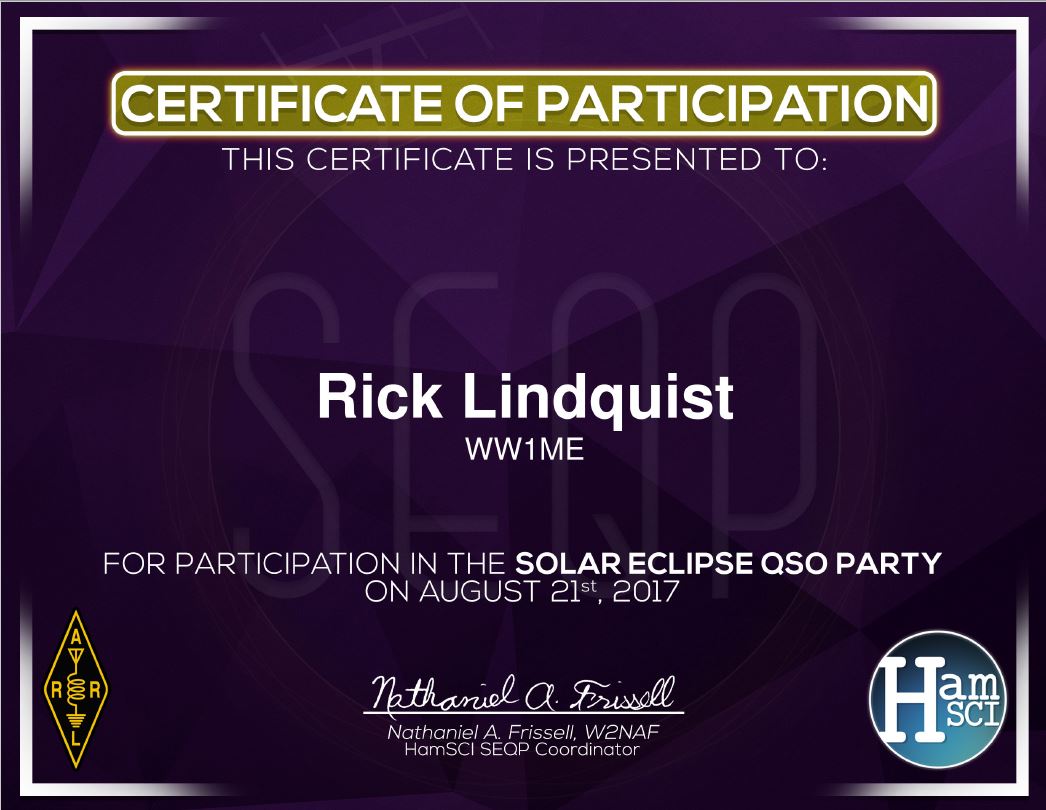
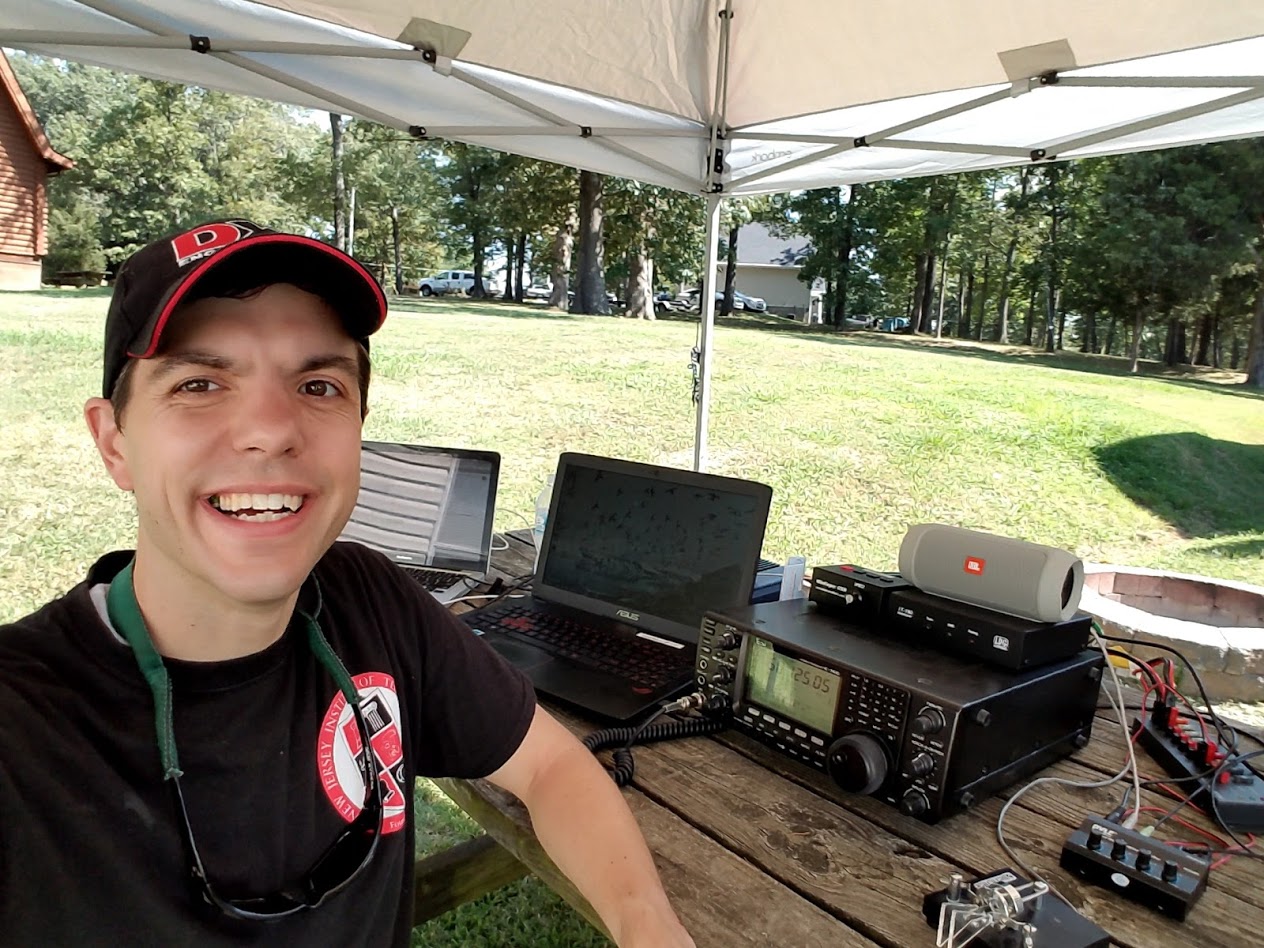
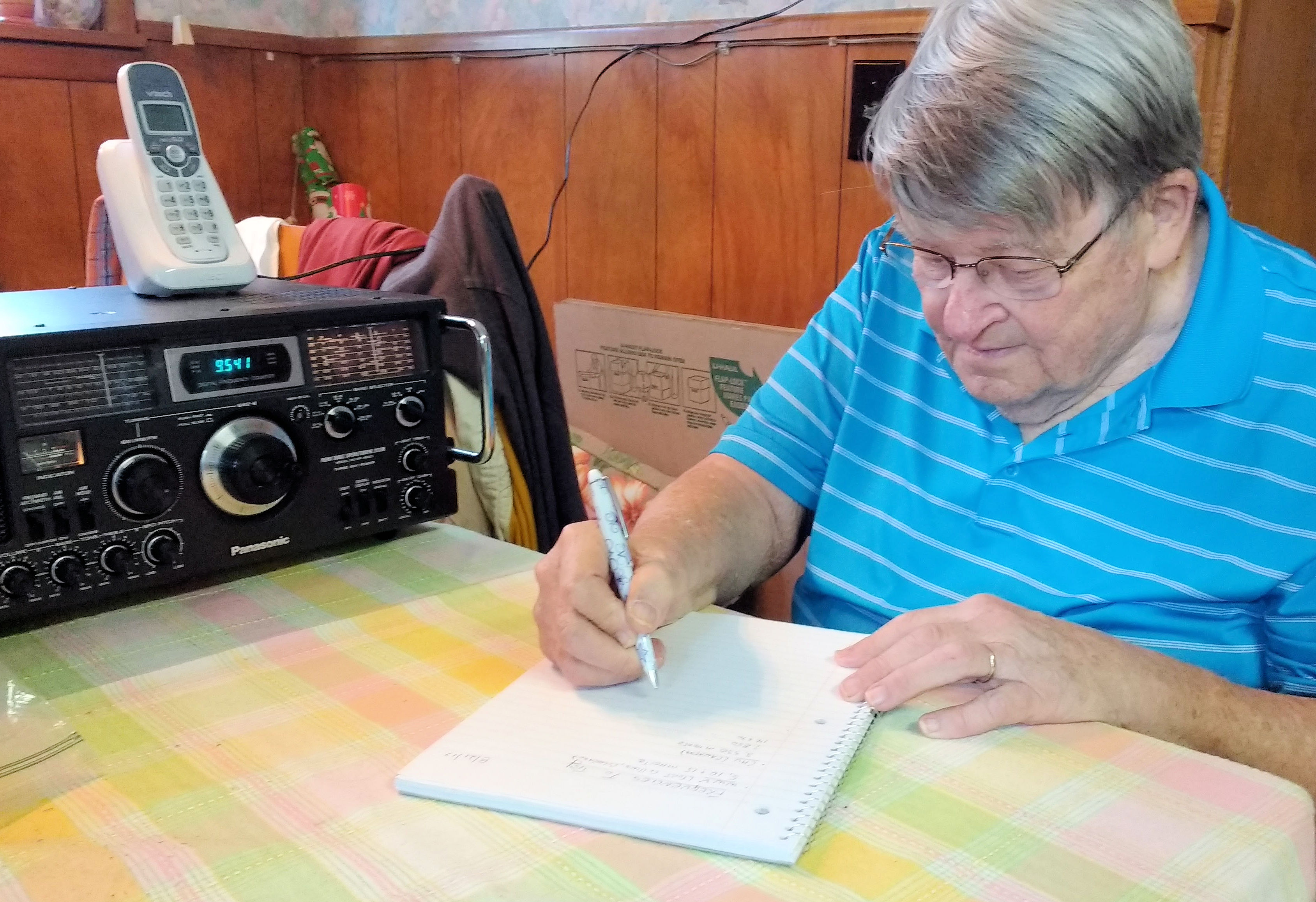
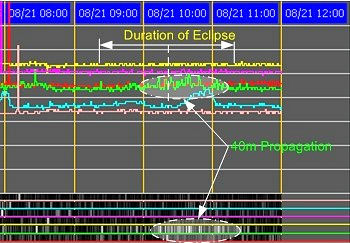
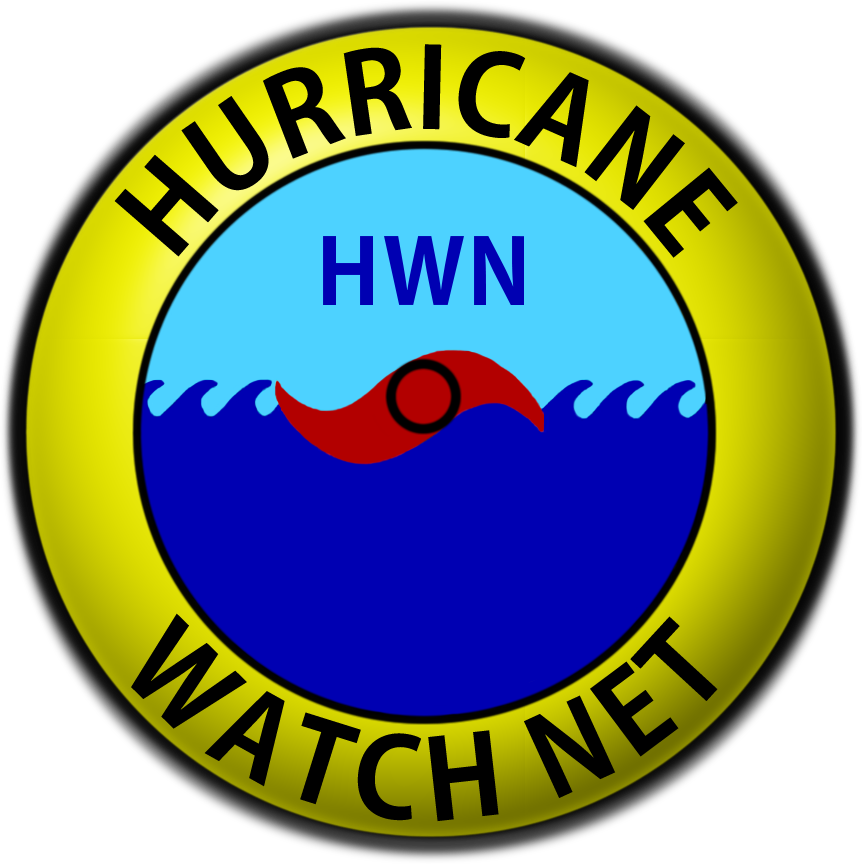 In its August 24 1800 UTC
In its August 24 1800 UTC  The NHC said Harvey is expected to produce total rain accumulations of 12 to 20 inches with isolated maximums of 30 inches over the Texas coast through next Wednesday. "Rainfall from Harvey may cause life-threatening flooding," the NHC advised.
The NHC said Harvey is expected to produce total rain accumulations of 12 to 20 inches with isolated maximums of 30 inches over the Texas coast through next Wednesday. "Rainfall from Harvey may cause life-threatening flooding," the NHC advised. Sponsored by
Sponsored by 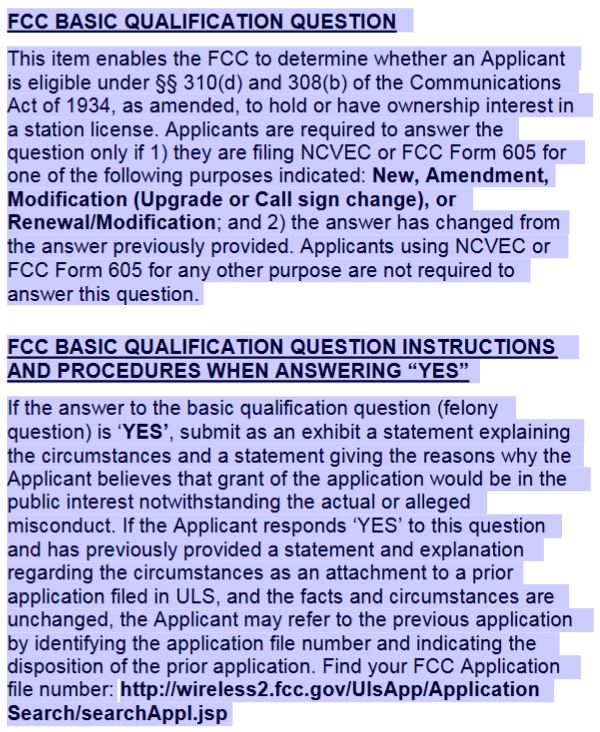
 VECs will not handle exhibits and confidentiality requests; these must be filed with the FCC by the applicant.
VECs will not handle exhibits and confidentiality requests; these must be filed with the FCC by the applicant..jpg) "SETs can be scheduled at the local and Section levels and conducted throughout the fall season to help maximize participation," Ewald said, "and ARRL Field Organization leaders have the option of conducting their SETs on another weekend if October 7 and 8 are not convenient."
"SETs can be scheduled at the local and Section levels and conducted throughout the fall season to help maximize participation," Ewald said, "and ARRL Field Organization leaders have the option of conducting their SETs on another weekend if October 7 and 8 are not convenient."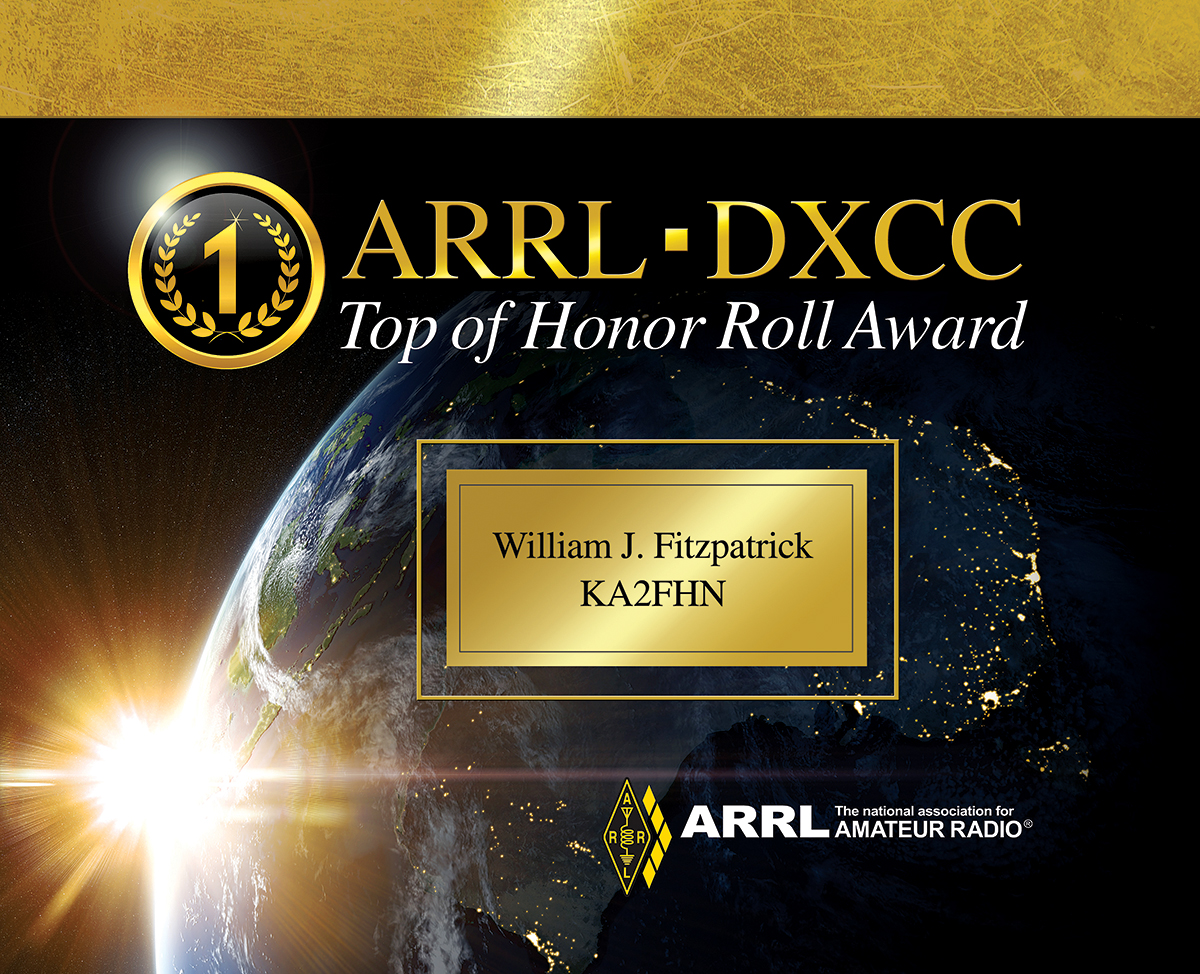 "These plaques feature a stunning graphic of the Earth transitioning toward sunset as viewed from space. After explaining grayline propagation to our graphic artist, Sue Fagan, KB1OKW, we think she really captured the concept with her design," said ARRL Radiosport Manager Norm Fusaro, W3IZ.
"These plaques feature a stunning graphic of the Earth transitioning toward sunset as viewed from space. After explaining grayline propagation to our graphic artist, Sue Fagan, KB1OKW, we think she really captured the concept with her design," said ARRL Radiosport Manager Norm Fusaro, W3IZ.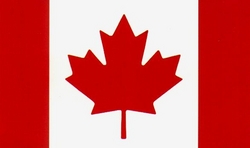 "The consultation is the first step in the process for regulatory changes," International Amateur Radio Union (IARU) Region 2 Area A Director George Gorsline, VE3YV, explained. "After the 60-day period, responses are tabulated, made public, and the regulator then determines how to proceed." Gorsline said there is no fixed schedule, and it could be "months or much longer" before any allocation changes are made. Even then, he added, Canada's Amateur Radio regulations would have to be updated to incorporate them before the new allocation would became available for amateur use.
"The consultation is the first step in the process for regulatory changes," International Amateur Radio Union (IARU) Region 2 Area A Director George Gorsline, VE3YV, explained. "After the 60-day period, responses are tabulated, made public, and the regulator then determines how to proceed." Gorsline said there is no fixed schedule, and it could be "months or much longer" before any allocation changes are made. Even then, he added, Canada's Amateur Radio regulations would have to be updated to incorporate them before the new allocation would became available for amateur use.(3).jpg) The regulator proposed retaining the five discrete channels already available to radio amateurs -- 5,332, 5,348, 5,358.5, 5,373, and 5,405 kHz.
The regulator proposed retaining the five discrete channels already available to radio amateurs -- 5,332, 5,348, 5,358.5, 5,373, and 5,405 kHz.-1.jpg)
 Next year, they'll pass along the symbolic "YOTA Key" -- a CW paddle set -- to the next group of youthful radio amateurs who will enjoy similar experiences at a new location in 2018. ARRL Marketing Manager Bob Inderbitzen, NQ1R, had the good fortune to
Next year, they'll pass along the symbolic "YOTA Key" -- a CW paddle set -- to the next group of youthful radio amateurs who will enjoy similar experiences at a new location in 2018. ARRL Marketing Manager Bob Inderbitzen, NQ1R, had the good fortune to 
 ARRL Now on Snapchat: ARRL is now on the Snapchat social media platform as ARRLHQ. Only used on mobile devices (iOS and Android), Snapchat is a way to share photos, videos, or a combination -- called "snaps" -- which remain available for viewing for 24 hours.
ARRL Now on Snapchat: ARRL is now on the Snapchat social media platform as ARRLHQ. Only used on mobile devices (iOS and Android), Snapchat is a way to share photos, videos, or a combination -- called "snaps" -- which remain available for viewing for 24 hours. 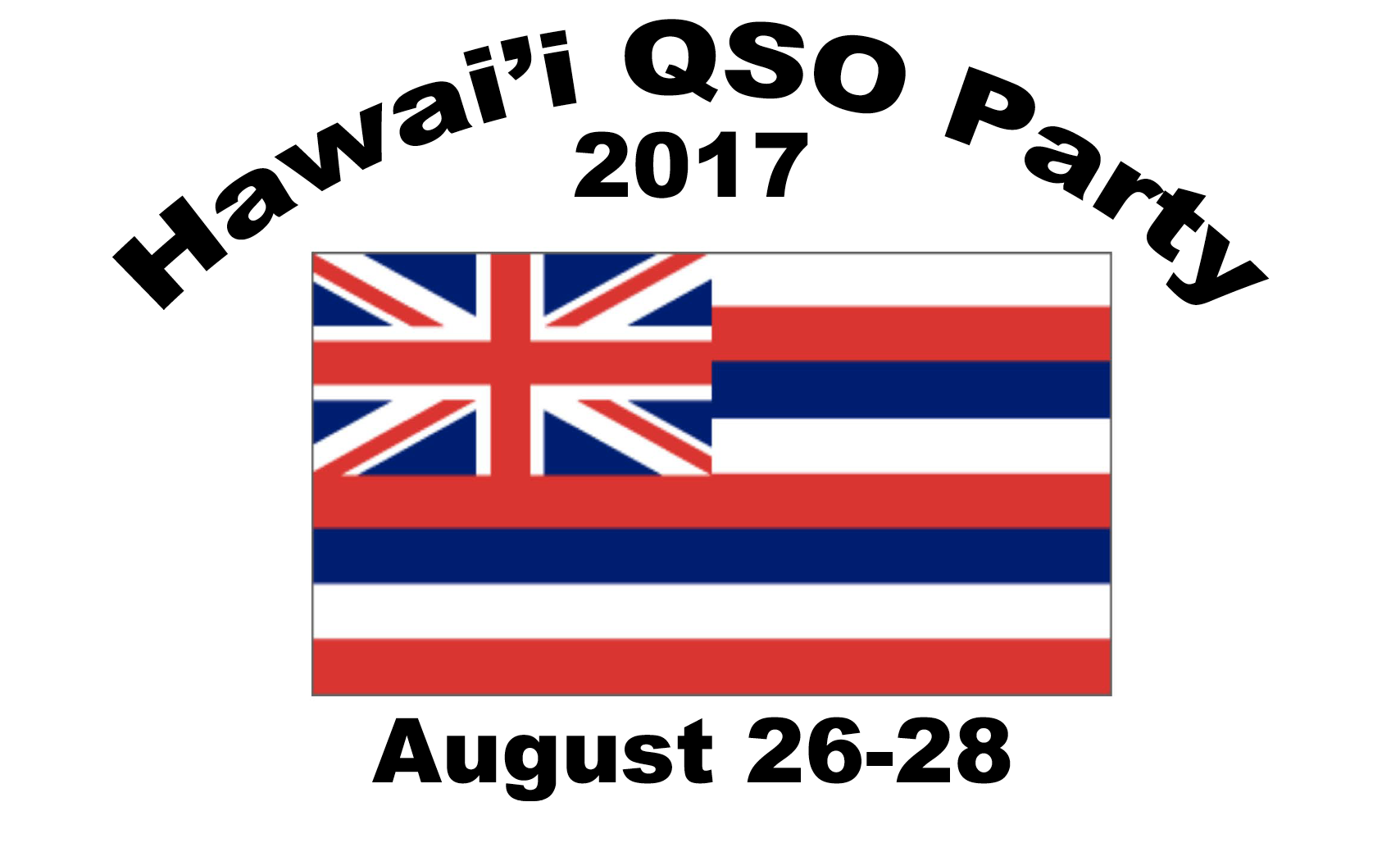 Hawaii QSO Party, Grid Madness Events Just Ahead: Hawaii is not just a US state, but a separate DXCC entity and at some distance from the continental US. This ups the challenge quotient for participants in the
Hawaii QSO Party, Grid Madness Events Just Ahead: Hawaii is not just a US state, but a separate DXCC entity and at some distance from the continental US. This ups the challenge quotient for participants in the 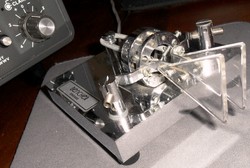 High-Speed Telegraphy Competition Set for September 8-12 in Hungary: The 14th High-Speed Telegraphy (
High-Speed Telegraphy Competition Set for September 8-12 in Hungary: The 14th High-Speed Telegraphy (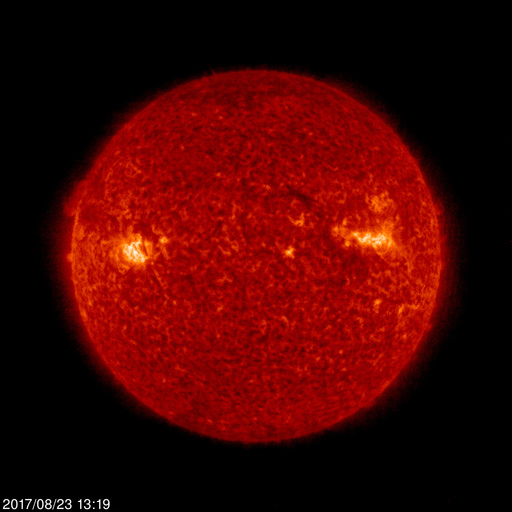 The predicted planetary A index is 14 and 8 on August 24-25; 5 on August 26-29; 10, 24, 18, and 14 on August 30-September 2; 5 on September 3-7; 10 and 8 on September 8-9; 5 on September 10-12; 25 on September 13; 30 on September 14-15; 25, 8, 10, and 6 on September 16-19; 5 on September 20-25; 12, 24, 18, and 14 on September 26-29; 5 on September 30-October 4, and 10 and 8 on October 5-6.
The predicted planetary A index is 14 and 8 on August 24-25; 5 on August 26-29; 10, 24, 18, and 14 on August 30-September 2; 5 on September 3-7; 10 and 8 on September 8-9; 5 on September 10-12; 25 on September 13; 30 on September 14-15; 25, 8, 10, and 6 on September 16-19; 5 on September 20-25; 12, 24, 18, and 14 on September 26-29; 5 on September 30-October 4, and 10 and 8 on October 5-6.







